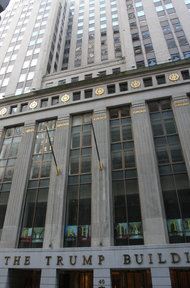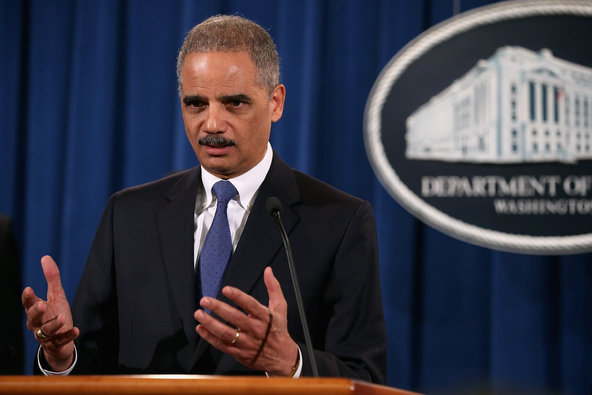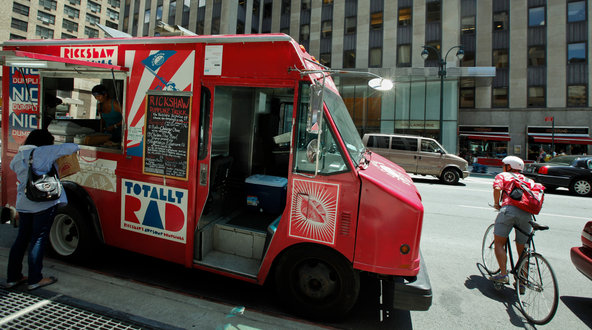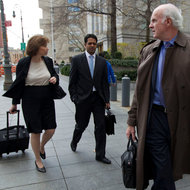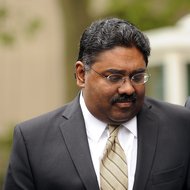Nearly 40 minutes into a chilly debate between the two Democratic candidates for public advocate, one of them, Letitia James, had not so much as looked at her opponent, Daniel Squadron, directing her eyes straight ahead as the two traded accusations.
It was a lightning-round question that finally broke her focus: Had either of the candidates tried marijuana?
Ms. James said she had not, citing the dangers of drugs. When the professorial-looking Mr. Squadron answered that he had, Ms. James looked at him quizzically.
“Really?” she said, and laughed.
It was the closest the two candidates came to a human connection in a debate marked by bitter exchanges. The setup was informal: the two sat side by side at a table in a studio at NY1, across from the moderators, Errol Louis of NY1 and WNYC’s Brian Lehrer. But the mood was frosty.
Ms. James, 54, a Brooklyn city councilwoman, and Mr. Squadron, 33, a state senator who represents parts of Brooklyn and Lower Manhattan, will face off next Tuesday in a runoff for the Democratic nomination for public advocate. The runoff was required because none of the five candidates in the primary received 40 percent of the vote. As there is no Republican candidate, the winner of the runoff is expected to assume the office.
Turnout is expected to be exceedingly low, which may have influenced the fiercely negative tone of the debate, as both candidates sought to win over the tiny number of undecided voters who plan to go to the polls and to motivate their supporters to do so.
Ms. James painted Mr. Squadron as an ally of Mayor Michael R. Bloomberg, noting that he was endorsed by the mayor when he ran for State Senate in 2008 and that he did not endorse Mr. Bloomberg’s opponent, William C. Thompson Jr., in the 2009 election. Mr. Squadron, in turn, described Ms. James as untrustworthy, saying she had failed to disclose rental income from tenants in her Brooklyn brownstone, as required by law, and that she was the only candidate for citywide office who had not released her tax returns.
When Ms. James said that she would release her tax returns “to you and to anyone else,” Mr. Squadron pressed her on whether she would do so on Wednesday morning, noting that she had pledged to do so in an earlier debate but then had not.
“Yes, Dan, I will release my tax returns,” Ms. James said, bristling, “just as I hope that you would release the fact that you have a trust fund.”
Mr. Squadron, who had been referred to as “Trust Fund Dan” by another candidate in the primary campaign, chastised Ms. James for making what he called an inappropriate personal attack, and added that it was not true that he had a trust fund because his family had lost all its money to Bernard Madoff’s Ponzi scheme.
Ms. James frequently described herself as “independent” and as someone who had “stood up to very powerful interests,” including Mr. Bloomberg. She noted that she had opposed Mr. Bloomberg when he sought to extend term limits, close schools and ban the sale of large sugary drinks. She also said she had stood up to “powerful developers” — an allusion to the Atlantic Yards project in Brooklyn, which she opposed.
Mr. Squadron countered that Ms. James had opposed Mr. Bloomberg’s soda limits while accepting contributions from Coca-Cola, and he asserted that she had also taken contributions from developers while weighing their projects.
Ms. James barely responded to these accusations, repeating like a mantra, “No one has questioned my integrity.”
“Any contribution that I receive,” she added, “is not going to change my policy one iota, not one bit.”
Mr. Squadron also tried to undermine Ms. James’s claim to be independent of the mayor, asserting early in the debate that she had voted with the mayor “159 times in the City Council — 98 percent of the time.”
Essentially responsible for fielding complaints about the city’s services, the public advocate has a minuscule budget and little direct power. Still, the office has frequently proved a steppingstone to running for mayor.
Some of Ms. James’s supporters have made race and gender issues in the campaign, saying that, because the mayor and the comptroller are both expected to be white men, voters should elect Ms. James, who is black, rather than Mr. Squadron, who is white.
Ms. James, meanwhile, seemed to be trying to insert class into the debate, with her “trust fund” comment, and an assertion that she was endorsed by labor unions because “I do not represent the interests of the rich and well connected.”
Mr. Squadron has been endorsed by Senator Charles E. Schumer, and two former public advocates, Betsy Gotbaum and Mark Green. The current public advocate, the Democratic nominee Bill de Blasio, has not made an endorsement.

Article source: http://www.nytimes.com/2013/09/25/nyregion/bitter-tone-in-debate-between-public-advocate-rivals.html?partner=rss&emc=rss

